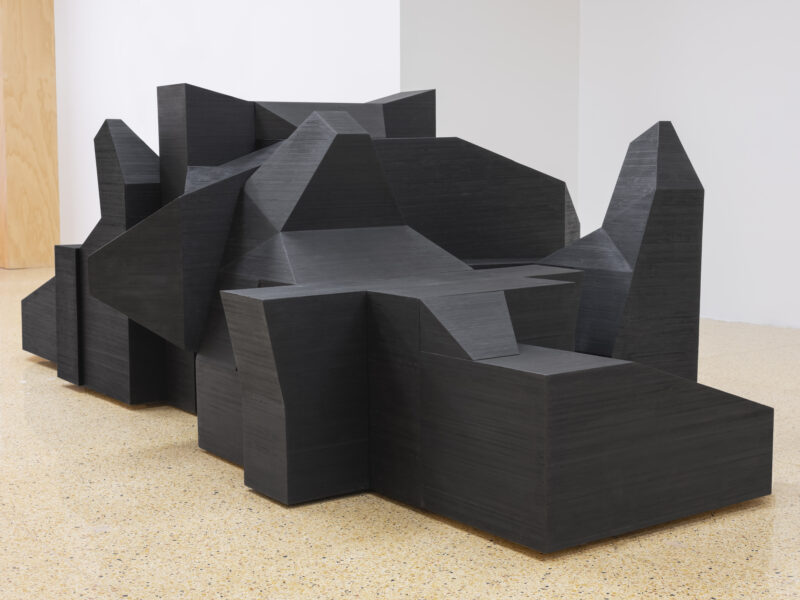James Casebere
July 20–October 13, 2024‘T’ Space is proud to present an installation of new sculptural work by James Casebere: Battle Beetle. This exhibition will be on view from July 20 – October 13, 2024 at the Archive Gallery, on the ‘T’ Space Reserve in Rhinebeck.
James Casebere’s work has always been about architecture, and from the start, he has built models to photograph. In the late ’80s, and early ‘90’s, Casebere built larger sculptural installations, but only recently has felt compelled to design new structures — first, specifically for photographs, but secondly, to imagine these new structures built in real space.
For this exhibition, Casebere will present a new series of large-scale wooden geometric sculptures titled Battle Beetle, whose processes reference architectural model-making. Casebere wanted to engage notions of synthetic nature in a way related to what is being referred to as bio-design — mimicking forms in nature — self-generating forms that suggest organic growth, even if geometric in this case.
The impulse behind the sculpture was, for Casebere, partly about real life experience instead of on screen, and the materiality, space, and use of light — crafting an analog experience that engages all the senses in a social context, similar to his Pavillion for 2 or 3 in Chatham, NY. Battle Beetle and its offspring, were created for an indoor gallery or domestic space related to, but not participatory and public like the pavilion. The use of burnt bamboo as a material was an embrace of traditional methods of wood preservation and sustainable wood products.
Casebere elected to use a material that was not so cold, constructing it out of planar surfaces, similar to model making. He decided to burn bamboo plywood, using the Japanese method known as Su Shugi Ban because of its soft and nontoxic qualities and associations. The burning preserves the wood, and while on one hand, suggests something destructive, it creates something warm, soft, and organic versus toxic, shiny or cold. Casebere embraces a vernacular tradition while using sustainable materials.
In the process, Casebere refers both to the past and the future: making associations with the warm and familiar, the traditional, as well as the future and its scary potential. The term Battle Beetle refers to the Spongy Beetles that attack the oaks and other trees around his residence, and perhaps the Japanese Beetle, another invasive bug decimating our forests.
The exhibition will open to the public during Upstate Art Weekend (July 20 – 21), and James Casebere will be present in the gallery to speak with visitors on Saturday, July 20 from 3-5 PM.








